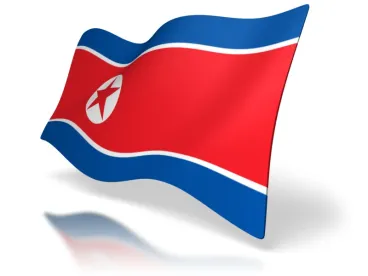With the passage of the Countering America’s Adversaries Through Sanctions Act (CAATSA) in August 2017, Congress assigned new responsibilities to United States Customs and Border Protection (CBP) to enforce expanded U.S. economic sanctions against the North Korean regime of Kim Jong-un and its sources of financing.
CAATSA significantly raises the stakes for U.S. importers to ensure their supply chains are free from forced labor – especially where the potential exists that merchandise may have been made by North Korean citizens or nationals, or from North Korean inputs. Given the use of North Korean workers in a number of countries outside of North Korea and the potential that third-country manufacturers may source some or all of the inputs for a product from North Korea, the reach of the new law is potentially very broad. This client alert outlines the changes in the law and CBP’s recent guidance concerning the steps importers should take to remain compliant.
For decades, CBP has had the authority to deny entry into the United States of goods that were produced wholly or in part by convict, forced or indentured labor under Section 307 of the Tariff Act of 1930 (19 U.S.C § 1307). Prior to the passage of the Trade Facilitation and Trade Enforcement Act (TFTEA) in 2016, however, an exception existed for imported goods that were not produced in sufficient quantities in the United States to meet U.S. demand. TFTEA eliminated that exception and allowed CBP to exclude imported merchandise where it had evidence that the merchandise was, in fact, the product of forced labor. The burden of proof was on CBP (or a party supplying CBP with information) to demonstrate that forced labor was involved in the production of the imported merchandise.
CAATSA reverses the burden of proof for imported merchandise believed to be the product of labor by North Korean citizens or nationals, wherever located. Specifically, Section 302A of CAATSA provides that CBP shall prohibit any “significant goods, wares, articles, and merchandise mined, produced, or manufactured wholly or in part by the labor of North Korean citizens or nationals” unless the importer can demonstrate by “clear and convincing evidence” that North Korean forced labor was not involved in the production of the merchandise. As a result, importers must carefully examine their supply chains and document the non-involvement of North Korean labor and inputs.
On November 7, CBP issued guidance identifying the kinds of supply chain diligence and internal controls that importers can and should take to meet this standard, and updated its Reasonable Care Checklist to help companies ensure goods are not produced wholly or in part by convict labor, forced labor and/or indentured labor. Among other things, CBP advises importers to:
- Understand how their imported goods are made, from raw materials to finished goods, by whom, where, and under what labor conditions.
- Review CBP’s "Forced Labor" webpage, which includes a list of CBP investigations and findings regarding past imports and suppliers, as well as forced labor fact sheets, to ensure that suppliers previously flagged by CBP are not involved in the supply chain.
- Analyze the Department of Labor’s "List of Goods Produced by Child Labor or Forced Labor" and the International Labour Organization’s “Indicators of Forced Labour” booklet to identify red flags and at-risk country and commodity combinations, and take additional diligence where such indicators of potential forced labor are found.
- Establish reliable procedures to prevent the use of forced labor and conduct periodic internal audits to check for compliance.
- Use a third-party auditor familiar with evaluating forced labor risks to conduct periodic, unannounced audits of the supply chain for forced labor.
- Vet new suppliers and vendors for forced labor risks through questionnaires or requests for documentation.
- Implement contract terms and conditions and supplier codes of conduct that prohibit the use of forced labor; set forth a time frame by which to take corrective action if forced labor is identified; and impose consequences if corrective action, such as the termination of the contractual relationship, is not taken.
- Put in place a comprehensive and transparent social compliance system that follows the recommendations of the Department of Labor’s “Reducing Child Labor & Forced Labor Toolkit.”
The consequences of failure to follow these guidelines can be severe, resulting in the seizure of merchandise and the imposition of civil penalties as well as reputational risk. CBP has begun to issue Requests for Information (CBP Form 28) advising importers suspected of having products made with North Korean labor or inputs to demonstrate that their products are, in fact, “North Korea-free,” or that they are otherwise able to rebut the presumption of forced labor when North Korean workers are involved. Informally, CBP has cautioned that the level of proof necessary to satisfy the CAATSA standard may include review of foreign supplier production records, employee lists, time sheets, wage records, bills of materials, inventory records and other documentation.
Companies seeking to avoid the consequences of a CBP investigation should carefully review the above recommendations to enhance internal controls, supply agreements and audit protocols, and where the presence of North Korean labor or inputs is suspected in the supply chain, seek enhanced information and documentation from the supplier.




 />i
/>i

